
A new report shows that Scotland's Wild Land Areas are being steadily reduced by development, from hill tracks and windfarms to forestry and micro hydro schemes; yet the Scottish Government's draft national planning policy fails to address the loss of this priceless resource. Stronger protection for wild landscape is urgently needed, argues James Fenton of the Scottish Wild Land Group.
You'll have seen the tourist brochures. "Come to the wild Highlands", "Experience Scotland's stunning scenery". These are easy words to say, and trotted out all the time by tourism businesses and agencies. The vision is based on a romantic image of an unspoilt land, of hills, lochs and moors untrammelled by the infrastructure of the modern world. What is perhaps surprising is that this image is rarely challenged. Even the outdoor press seems to spend more time extolling fantastic walks and climbs in the remote hills than mentioning the fact that many of them are increasingly less remote.

In the Highlands today, it is hard to be more than a mile or two from a bulldozed vehicle track, a forestry plantation or a mobile phone mast. The glens are gradually being filled with renewable energy infrastructure. It would appear that soon every good-sized burn will have a dam, a buried pipe, an access track and a power station at the bottom. Such run-of-river hydroelectric schemes are turning up everywhere, even encroaching into the heart of the Torridon mountains.
If we want to experience significant wild mountain landscapes in the Highlands in the future, then they need stronger protection from new development now
And with the turbine height of wind farms growing ever taller, some now to 150 metres, even if there is no windfarm nearby, they can now be seen from many summits – a development that is likely to continue as increasingly high renewable energy targets are set. And all new wind farms come with an extensive network of new bulldozed tracks.

Likewise, government policy is pushing for a marked increase in forest cover. This looks good at first reading, but bear in mind that modern commercial forestry practice is not sensitive to the environment, involving as it does ploughing or mounding, deer fencing, major vehicle tracks and ugly clear-felling. There is also the ever-increasing problem of non-native conifers, particularly Sitka spruce, seeding out of these plantations and beginning a takeover of the wider landscape. If no action is taken, in a hundred years or so the hills will no longer be open moorland but transformed into spruce forest.
And of course, as noted in a previous opinion piece on UKHillwalking, Highland estate owners are continuing their relentless construction of new hill tracks into the heart of the hills, often for nothing better than to ease the access of their shooting clients. When did walking become so difficult?
Scotland's iconic wild landscape is being nibbled away on many fronts. So why is there little outcry about all this? Indeed, why is the climbing and hillwalking fraternity largely silent, while at the same time enjoying the freedom and remaining wildness of the open hills? Surely everyone must be noticing the slow attrition of the wildness of the Highlands, indeed of hill regions throughout Britain?
Planning policy has not prevented the continuing attrition of wild land. There is an absence of positive and consistent planning oversight.
Quantifying the threat
It is easy to say that the wildness of the hills is being lost, but if we want to convince politicians that something needs to be done about it they will ask for evidence. Although everyone can point to specific instances of inappropriate development in wild land, there has been no hard evidence that demonstrates the overall rate at which wildness is being lost in our hills. Up until now, that is - for the Scottish Wild Land Group (SWLG), has just published a new report The State of Wild Land in the Scottish Highlands. This was commissioned in association with the Scottish Mountaineering Trust and The Cairngorms Campaign, who contracted the prestigious Wild Land Research Institute at Leeds University and Ian Kelly Planning Consultants to look at historical trends in wild land loss. This report is the result.
The wildest areas of Scotland, that is the areas with a minimum of human infrastructure and relatively natural vegetation, have all been identified and labelled as Wild Land Areas (WLAs) by the government agency NatureScot (previously Scottish Natural Heritage) and there are 42 in total. As it turns out, the identification of WLAs was based on research carried out by Steve Carter of the Wild Land Research Institute, who also worked on this project.

For our report the research team took a sample of four such WLAs and studied in detail the trends in wildness from 1750 to the present day. The year 1750 was chosen as the start date because there is a good series of maps from this period (the Roy Maps). The sample areas were:
WLA 19: Braeroy - Glenshirra - Creag Meagaidh
WLA 20: Monadhliath
WLA 24: Central Highlands
WLA 34: Reay-Cassley
The conclusions are perhaps not too surprising, but at least there is now evidence to back them up. The main findings are:
- Development over the last 250 years has significantly impacted on the remaining areas of wild land. Such impacts are principally from road and track construction which reduce remoteness by providing easier access to wild areas, and from new structures which stand out in the landscape with a corresponding reduction in wildness.
- Forms of visual intrusion have changed over the period mapped and have tended to go in phases starting with road and rail construction, and more recently seeing phases of development in renewable energy: first hydro power in the 50s and 60s, wind energy in the last 20+ years and now small-scale run-of-river schemes. Plantation forestry has also moved in phases but at different rates throughout the period. Associated with all of these, and also with estate management, has been continual expansion of the hill track network.

- It is only eight years since the mapping and designation of Wild Land Areas in Scotland in 2014. This makes it too soon to say whether they have had an effect on slowing the rate of loss of wild land from reductions in remoteness and visual impacts. Nonetheless, long-term and short-term rates of attrition, if extrapolated, would indicate continued threat to the remaining areas of unimpacted, remote wildland. Whether this means that there will be some future point at which all wild land ceases to exist is open to question.
- Wind farms do not have to be inside the boundaries of a Wild Land Area to affect the experience of wildness because wind farms nearby are still highly visible. There are some Wild Land Areas, such as WLA 39 (East Halladale Flows, Caithness) and WLA 1 (Merrick, in Galloway) that are close to being surrounded by wind farms that have been built, consented or proposed. Additionally, Scottish Ministers gave permission for the Creag Riabhach wind farm which had turbines within a Wild Land Area (WLA 37 Foinaven–Ben Hee, in Sutherland).
- The recent and current planning policy provisions at national and local level have not prevented the continuing attrition of wild land, whilst wind farm applications continue to be random, speculative proposals which are followed by often inconsistent decision-making. There is an absence of positive and consistent planning oversight.
The future of wild land?
If hillwalkers and climbers still want to experience significant wild mountain landscapes in the Highlands in future, then they need stronger protection from new development, including commercial forestry plantations and hill tracks. And this applies to insensitively sited renewable energy schemes too, for although the country needs more renewable energy, it also needs to retain some wild landscape where nature can still be experienced in the raw, where nature is still in charge and the visible hand of mankind is minimal. In this situation we have what is called a 'green-on-green conflict', where two worthy environmental outcomes are in conflict, for it is impossible to combine wild landscapes with industrial infrastructure.
Although NatureScot has identified the Wild Land Areas, they have no legal backing: they do not have the protection which is afforded by legislation. However they are mentioned in current Government planning guidance, which states "We also want to continue our strong protection for our wildest landscapes – wild land is a nationally important asset" (from National Planning Framework 3).
The Scottish Government is currently updating its planning guidance and a draft National Planning Framework 4 (NPF4) is now out for consultation, with a deadline for comment at the end of March 2022.
The draft does not identify wild land as 'a nationally important asset' and the phrase above is not included, although it does state:
"Development proposals for development in areas identified as wild land should only be supported where:
• the proposed development cannot be reasonably located outside of the wild land area; or,
• it is for small scale development directly linked to a rural business, croft or required to support a fragile population in a rural area; and,
• a site based assessment of any significant effects on the qualities of the areas is undertaken, and use of siting, design or other mitigation minimises adverse impacts."

Rumours suggest that the renewable energy industry is lobbying for a weakening of the protection given to Wild Land Areas. Be that as it may, it is undoubtedly true that the presence of WLAs does constrain the areas where large wind farms can be built. As is, the policy currently rules out such wind farms in National Scenic Areas (the equivalent of Areas of Outstanding Natural Beauty in the rest of the UK) and National Parks.
It would be good if those concerned about the loss of wild land could take part in the consultation and argue that the statement from the previous framework "We also want to continue our strong protection for our wildest landscapes – wild land is a nationally important asset" to be carried over to the new NPF4. And that the above bullet points remain, with the addition of the phrase "There should be a presumption against development in Wild Land Areas".
Long-term, the hillwalking fraternity, and others concerned about the loss of wild land, should argue for them to be enshrined in law. A conclusion of the wild land report is that: "In the longer term, the Wild Land Areas need to be given a stronger legal underpinning so that attrition of their special qualities no longer takes place. In particular, care needs to be taken to ensure that WLAs are neither abandoned or watered down in the ongoing NPF4 consultation."
Some good news
A proposed wind farm in wild land the Monadhliath Mountains, the Glenshero scheme, has recently been refused permission by the Scottish Government because of its visual impact. This was opposed by Mountaineering Scotland amongst others.
So it is not inevitable that our wild land in the Highlands will continue to disappear.
Links:
- The report "The State of Wild Land in the Scottish Highlands" can be downloaded here
- Wild Land Areas (from NatureScot)
- National Planning Framework 4 consultation - Runs until 31 March 2022
- Scottish Wild Land Group

















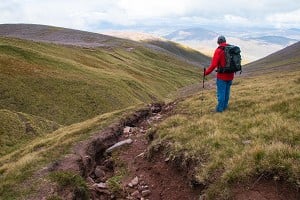
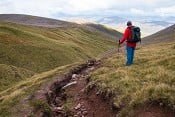
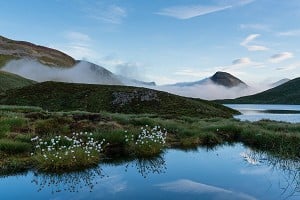
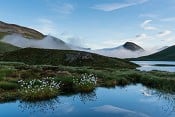


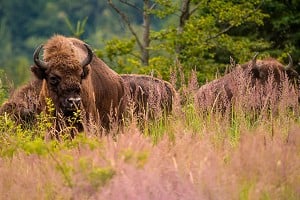



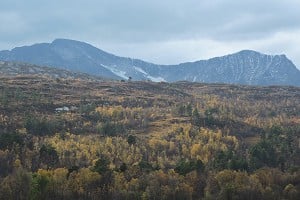

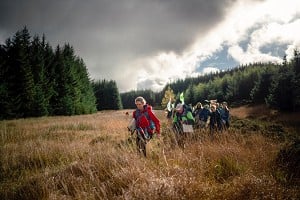
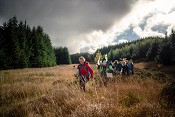
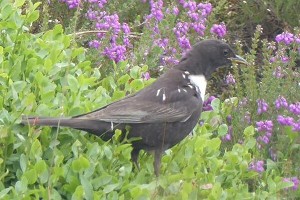
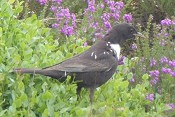



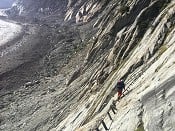






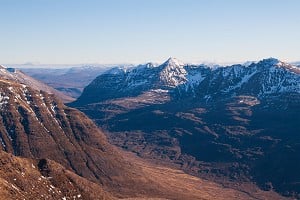
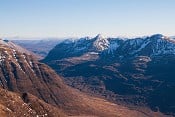














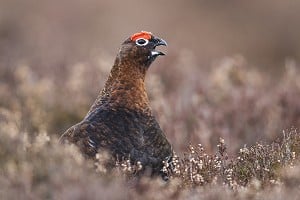

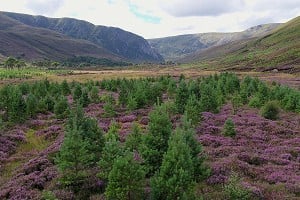

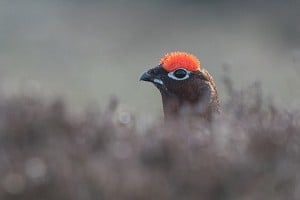



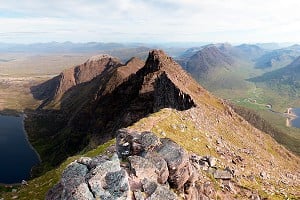

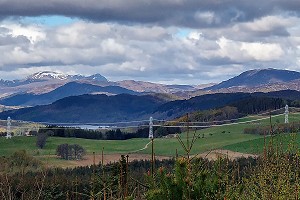
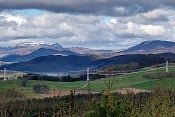
Comments
I'm a lot more interested in promoting biodiversity than in preserving how wild a place "feels" to modern domesticated humans. They're two completely separate issues which are often conflated. We've profited immensely from, for example, North sea oil and gas, which has been out of sight and out of mind whilst enabling for many of us the lifestyle that allows us to travel to wild places and enjoy them. If the impact of renewable energy infrastructure is primarily visual impact then that's a tiny price to pay for the benefits of weening us off fossil fuels, particularly since hydro and wind offer the British isles energy independence in an increasingly uncertain world. The alternative is new nuclear, for example at the Wylfa or repowering Trawsfynydd. I wonder how the author would feel about that if he lived in North Wales?
"open moorland" is partly a man made structure in itself!
Absolutely right. Not only that, but *all* of the so-called wild places in Britain have been affected in some way by human activity. Deforestation, grazing, culling of predators, air pollution, micro-plastics.... The list goes on and on, but so long as the author can't see wind turbine blade tips on the horizon they can continue to indulge their fantasy.
I'm not sure how helpful it is to set one group of people who care about our outdoors environment against another group of people who care about our outdoors environment. The author makes reference to 'green-on-green conflict', and I think it preferable to all those who care to share ideas and attempt to develop consensus positions, instead of attempting to claim that one position trumps any other. Whatever is done will almost certainly need to be a compromise, and may well vary across different locations.
My reading of the article is that they don't care so much about our outdoors environment as they do about their own experience of it. I'm all for preserving the areas of wilderness that we have left on the planet, but almost by definition that would mean severely restricting access to them. I'm certainly not in favour of that in Scotland.
Cards on the table, I've spent the last 15 years mostly working in renewables and I've spent the last 5 years working on a fleet of medium scale wind turbines and hydro sites scattered around farms on Wales. I've seen how new income streams make hill farmers less dependent on overgrazing and I've also seen how severely regulations have limited the roll out of renewables since 2010.
I'd like to be able to reach some sort of consensus position, but when the opposing position is based on an ineffable sense of "wildness" rather than measurable outcomes (eg biodiversity and a decarbonised grid) it's hard to see where that could be found.